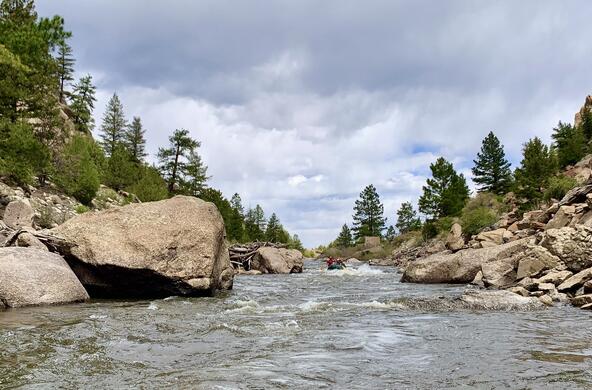Speaker:Charles Canham, Cary Institute
Abstract: There have been suggestions that eastern US forests are ‘maturing’ and that their productivity and potential future carbon sequestration is declining. This issue has taken on heightened importance in policy debates about the role of forest carbon sequestration in climate change mitigation. Concerns about the potential for declining rates of carbon sequestration appear to be based on erroneous (and in some cases, self-serving) assumptions rather than either established science or any comprehensive analysis of the dynamics of eastern forests.
The US Forest Service Forest Inventory and Analysis (FIA) network provides the most rigorous basis for addressing these issues. Canham will present detailed analyses of aboveground biomass increment, natural mortality, and harvested biomass from the network of ~150,000 FIA plots in the 31 eastern states. Contrary to the arguments of proponents of ‘young forests’, biomass increment as a function of biomass does not peak in ‘young’ (low biomass forests), but in fact shows very broad plateaus that peak at biomass levels well above the median biomass in all of the major eastern forest types. Canham will also present results on the relationship between biomass increment and climate variables, nitrogen deposition, and species diversity. Biomass increment (and thus the largest single term in forest carbon sequestration) is the balance of gross growth minus the combined effects of natural mortality and harvested biomass. Those latter two terms are roughly equal in magnitude in eastern forests. But, contrary to expectations of young forest proponents, natural mortality as a percentage of standing biomass actually declines slightly with increasing biomass, while harvested biomass increases with increasing biomass. Also contrary to expectations, harvesting does not increase subsequent productivity, at least in the decade following a harvest.
Canham’s team has used demographic analyses of the FIA data to parameterize their model ‘SORTIE-ND’ to project the future dynamics of northeastern forests, and assess the net carbon impacts, including the sources and sinks associated with harvested wood products and offsets associated with woody biomass energy. Results predict that carbon sequestration rates for northeastern forests will roughly double (per hectare) over the next 60-80 years under current harvest regimes, before stabilizing as the average biomass approximately doubles. All of the scenarios that the team has examined that involve increases in harvest rates lead to lower average rates of carbon sequestration over the next 50 years, even when accounting for storage in harvested wood products and offsets of fossil fuel emissions through production of woody biomass energy.







